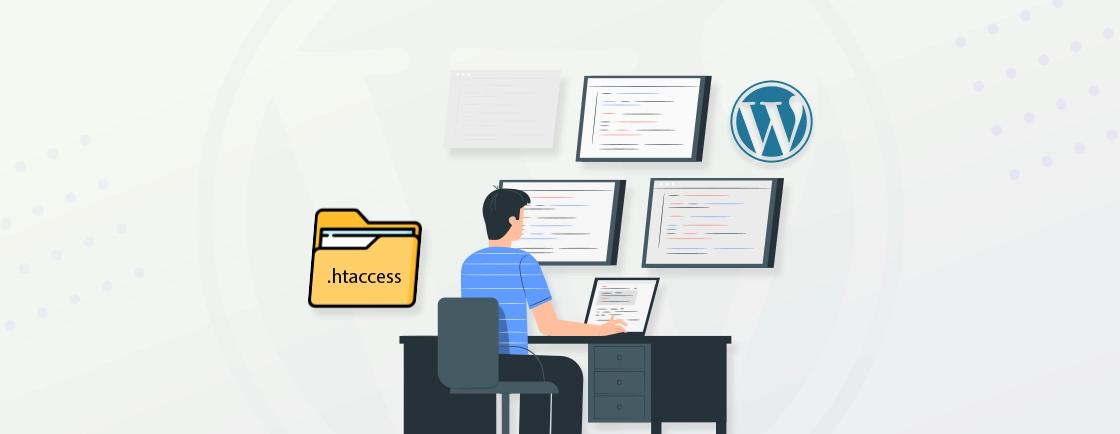Table of Contents
Building a feature-rich WordPress website involves installing plugins and using libraries. But these elements come with their own dependencies that can turn the development process into a tangled mess. That’s where Composer comes in.
Developers use Composer to manage dependencies and simplify the process of building WordPress websites. It gives them a centralized location to declare and manage the third-party code more efficiently.
So, how do you use Composer with WordPress? Well, that’s what we aim to cover through this blog. Let’s begin.
What is Composer?
Composer is a PHP dependency manager. It helps you manage the various libraries and tools your projects rely on. For example, take the plugins, theme, and the libraries as the building blocks for your website. Then Composer will act like a central hub and manage them efficiently.
Here’s how it simplifies things:
- Declares Dependencies: You tell Composer exactly which libraries your WordPress project needs to function.
- Automates Installation: Once you’ve declared your needs, Composer fetches and installs those specific libraries for you.
- Updates Made Easy: Keeping your libraries up-to-date is crucial. Composer streamlines this process by allowing you to update all dependencies with a single command.
- Version Control: Composer ensures compatibility by installing the exact versions of libraries your project requires, avoiding conflicts.
This translates to a more organized and efficient development workflow. You can focus on building your website without getting bogged down by managing external libraries. That’s why Composer is one of the key web development tools.
Why Use Composer With WordPress?
WordPress is regarded as the best CMS, and the reasons behind that are powerful core functionalities served in a user-friendly manner. That involves using a variety of plugins and themes. They can easily add features, enhance the design, and overall, help you tailor the user experience.
According to some experts, a WordPress website may have as much as 20-30 plugins installed at the same time. But managing so many of them according to their latest versions and dependencies can be a pain. That’s where Composer can be beneficial.
- Improved Organization: By declaring all your dependencies (plugins, themes, libraries) in a central location (composer.json file). This makes it easier for you and your team to understand what the project relies on. Composer works alongside traditional version control systems like Git. Together, they provide complete project history and dependency tracking.
- Simplified Updates: Updating plugins and libraries can be a risky business – incompatible versions can break your site. Composer allows you to easily update all dependencies while ensuring they remain compatible with each other and your WordPress core version.
- Version Control and Consistency: Composer lets you specify the exact version of each dependency needed for your project. This ensures everyone working on the project uses the same codebase, preventing unexpected bugs or functionality issues that might arise from version discrepancies.
- Reduced Repository Size: Traditionally, developers might include the entire codebase of plugins and themes within their project repository. This inflates the repository size and makes it cumbersome to manage. Composer eliminates the need for this by simply referencing the required libraries, keeping your repository lean and efficient.
To put it lightly, with Composer handling dependency management, you can spend less time wrestling with updates and version control. That means a better focus on the core development tasks like building features and customizing your WordPress site. If managing plugins, themes, and dependencies feels overwhelming, consider working with a WordPress development company that can streamline your workflow with Composer and build a secure, scalable website tailored to your needs.
How to Install Composer?
It’s quite easy to install Composer. There are two ways to go about it. You can either use the CLI (Command Line Interface) or the Hosting cPanel.
Using Command Line Interface (CLI)
Although this method is more flexible and offers more control, you will need to be familiar with the command line. Here’s how you install Composer.
Step 1: Head over to the official Composer website and download the appropriate installer for your operating system (Windows, macOS, or Linux).
Step 2: Follow the instructions listed on the download page. That may involve moving the downloaded file to a directory accessible from the PATH environment variable on your system.
Step 3: Open your terminal and type composer –version. If Composer is installed correctly, you should see the installed version number displayed.
Using Hosting cPanel
You can manipulate the WordPress configurations using cPanel quite effectively. Many of the best WordPress hosting providers offer cPanels by default. With that, you can install Composer directly. Here’s how this process goes:
Step 1: Login to your hosting account and navigate to the cPanel interface.
Step 2: Look for a section related to software management or application installations. This section might be named “Softaculous” or “Application Installer” depending on your provider.
Step 3: Search for “Composer” within the software management section.
Step 4: If Composer is available, follow the on-screen instructions to initiate the installation process.
While installation with cPanel is more convenient, the CLI method will give you more control and access to the latest features.
If you need help with installation and setting up Composer and other key web development tools, consult with our WordPress experts.
How to Use Composer with WordPress?
While Composer can’t directly install WordPress, it can help you set up the project by declaring WordPress core, along with the plugins and theme, as a dependency. It makes the whole project management a little easier. Let’s look at a few key parts of using Composer with WordPress.
Setting up your WordPress project with Composer involves initializing Composer within your project directory and defining the project type. Here’s how the process goes.
Step 1: Create a project directory
First part of the process involves creating a separate directory for your project (outside the WordPress file and directory structure). In this directory, you will manage the plugins, themes, and other custom code.
Step 2: Initialize the Composer
To initialize the composer, navigate to your project directory. On your terminal application, run:
composer init
This command initializes Composer within your project and creates a file named composer.json. It will serve as the configuration hub for your project’s dependencies.
During initialization, Composer will prompt you for basic project information like name, description, etc. Fill out this information as needed.
Step 3: Define the project type
Composer offers different package types for WordPress projects. Choose “wordpress-plugin” if you’re developing a custom plugin that extends WordPress functionality. Select “wordpress-theme” if you’re creating a custom theme to style the website’s appearance.
Step 4: Configure composer.json
Although this step is optional, it will be helpful. It involves the “require” and “repositories” sections.
“require” Section: This section is where you’ll list all the plugins and themes your project depends on. Use the following format for each dependency:
"vendor/plugin-name": "version"
Replace “vendor/plugin-name” with the actual vendor and plugin name (like wpweb/woocommerce-social-login). And replace the “version” with the particular version number you require (like “^5.9”). The “^” symbol ensures compatibility with future minor releases of the plugin while maintaining major version stability.
“repositories” Section (Optional): If your plugins or themes reside in repositories other than the default Packagist.org, you’ll need to define those repositories in this section. Refer to Composer documentation for specific instructions.
Step 5: Save and Run Composer
After filling outh te information and defining your dependencies, save the composer.json file.
And after you have configured the composer.json file, run this command in your terminal.
composer install
This command instructs Composer to download and install all plugins and themes specified in the require section.
This approach promotes organization, simplifies updates, and streamlines your development workflow for a more efficient website building experience.
How to Update WordPress with Composer?
Composer can’t directly update the WordPress core. Due to some security considerations, you want to keep the WordPress core files separate from the Composer-managed dependencies.
Updating the WordPress core will be completed through the WordPress dashboard itself. There’s a built-in update notification system that will alert you when a new version is available. You can then initiate the update process directly from the dashboard.
Now, coming to the process of updating WordPress themes and plugins with Composer, let’s discuss how you can go about it.
Before starting the process, make sure to backup your WordPress website as you will be making technical configurations. That way, you can restore the website if anything goes wrong.
Step 1: To start the update of WordPress themes or plugins, modify their version constraints in your composer.json file. For example,
{
"require": {
"wpackagist-plugin/akismet": "^4.2",
"wpackagist-theme/twentytwentyone": "^1.4"
}
}
Step 2: To update the dependencies to the latest versions allowed by your composer.json file:
composer update
That will help you fetch the latest versions of the specified dependencies in composer.json.
Step 3: After updating, check your site for any compatibility issues. Visit your website and ensure that it’s functioning correctly.
Test critical functionalities and plugins to make sure nothing is broken.
Step 4: If you’re using Git for version control, commit your changes:
git add composer.json composer.lock
git commit -m "Update WordPress core, themes, and plugins"
Step 5: Deploy the updated composer.lock and composer.json files to your production environment and run:
composer install
This ensures your live production website uses the same core, theme, and plugin versions as your WordPress development environment.
Composer handles plugin dependencies, but WordPress core updates happen separately. The wp-config.php file controls core WordPress behavior independent of Composer-managed packages.
To Summarize
Composer can help enhance your WordPress development experience. This dependency manager streamlines the process of managing plugins and themes, ensuring a more organized, efficient, and maintainable project.
With Composer, you can precisely define the specific versions of plugins and themes your project requires. So the updates can be streamlined without any compatibility issues. And you can centralize the dependency management in your composer.json file. That gives more control over the project’s structure and dependencies.
So, if you need help with advanced customization and management of your WordPress website, then hire WordPress experts today!
FAQs on Using Composer with WordPress
Can Composer install WordPress?
Composer cannot directly install WordPress, but it can help you set up a WordPress project by declaring WordPress core, plugins, and themes as dependencies. This ensures that all components are version-controlled and can be managed centrally.
What are some important considerations when using Composer with WordPress?
Here are a few:
– Test After Updates: Always test your website after updates to ensure everything functions as expected.
– Theme/Plugin Activation: Re-activate plugins and themes in the WordPress dashboard after updates.
– Standard Core Updates: Update the WordPress core itself through the WordPress dashboard.
– Version Control Integration: Consider using Git to track changes and collaborate effectively.
Are there any limitations to using Composer with WordPress?
Yes, here are a few limitations to using WordPress with Composer.
– Security: Composer doesn’t directly manage the WordPress core due to security concerns.
– Custom Repositories: You might need to configure additional repositories if your plugins/themes reside outside the default Packagist.org.
Create with WordPress CMS
Build flexible and scalable websites using WordPress's powerful content management system.





